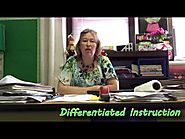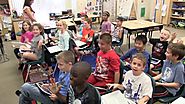-
About
- About Listly
- Community & Support
- Howto
- Chrome Extension
- Bookmarklet
- WordPress Plugin
- Listly Premium
- Privacy
- Terms
- DMCA Copyright
- © 2010-2024 Boomy Labs

 Joshua Davis
Joshua Davis
Listly by Joshua Davis
Listed are videos that are showing successful integration of technology in classrooms.

Description: This video is about MobyMax. It is only about three minutes but shows excerpts of student engaged and working on their personal MobyMax account. The video ends with the classroom teacher giving the rundown on how to use the account effectively.
Why: I know that in the description, the instructor said,"Integration is NOT using specialty software for drill and practice day after day." But I have seen the results from MobyMax. The students being using the software by first taking a pre-assessment. Content assessed with the software range from early math standards to advanced english standards. After the pre-assessment, MobyMax takes the students results, and makes a personal curriculum for the students. This is great because Differentiated Instruction is done for the teacher, and every student is working on their personal goals. This is not a software that is to be used for large portions of classes, and it is also not expected to take the place of the teacher. My students use this every morning when they get off the bus before breakfast, and the growth i have seen is amazing.

Description: Oakstead Elementary teacher Tavia Wright demonstrates how she uses technology to enhance the learning of her students. Edmodo and Socrative are featured.
Why: This video shows a good balance between student-centered learning, and technology integration. The teacher, Tavia Wright, gives a great example on how a teacher can lecture, while at the same time allow students to use technology in two different ways. It was really awesome to see the Tavia use the clicker software, and EDMODO at the sometime, and she used both of these types of software for one thing, assessment. It is because of this, and of the great technology that Ms. Wright could see where each student was both individually and as whole class. This is a great example of integrating technology.
Description: In the video, the teacher is explaining a lesson where she allowed the students to use Google Earth to construct a project. The students used Google Earth to research a location, and then got in groups to discuss the location and how it fit within the project.
Why: The video showed a great example of using technology in the classroom. The students used technology, not to learn new content, but to build on content already learned. This helped me understand that integrating technology does not mean to give them an app and make the students learn the content through the app, but to enrich what they know by allowing them use what they are comfortable with, technology. This video also shows that with successful technology integration come great student-student, and student- teacher collaboration.
Description: Class went on a field trip to their local fish Hatchery, where they used a combination of compasses, GPS, and netbooks. The lesson was made by teacher to use the technology to graph the Latitude and Longitude on where they found specific pieces of data.
Why: This is a great example because the students got to CHOOSE what type of technology they wanted to use in order to effectively collect data on where they found the data they were collecting. The students would go on a search for things like twigs for nests, old birds nests, debri, etc. and would take the coordinates form the field and go back to their netbooks to input the data. The netbooks would then take the data and trace their steps to show them there they found their data. This is an awesome way to integrate technology because it takes what the students know about coordinates, latitude, and longitude and makes them use technology to enrich their learning. Of course this lesson could have been done without technology, but the students obviously got more out of this type of lesson because using technology generally means the students are more engaged, and thus more learning happens.
Description: Students research a given animal, and then build a podcast using a plethora of different technological tools to create a podcast.
Why: Students in this video were asked to research a specific topic, and then take the research and then use several different tools to create a podcast. The students started by researching facts, followed by pictures. The students used the information to write a script in which they used the tool "garage band." With Garageband, the students recorded their scripts and then added the images as enrichment purposes. This is a good example of technology integration because the students used the technology to create a performance assessment that made the students step out of their comfort zones, and take risks in order to make a solid project.
Description: This is a technology lesson on the "infusion" level. After the teacher did a whole group lesson days prior, the students embarked on a technology based project using photo story.
Why: The students were expected to go on the internet and find pictures of monuments. The students had already been taught about the monuments, so the technology was their for enrichment pup[roses only. The students were expected to find the pictures individually and then bring their findings back to the group to input their findings on photo story. The teacher was present in the lesson, but as facilitator only. This was a good example of a student-centered technology based lesson.
Description: The class began by having an interdisciplinary lesson between the Language Arts and the History class. The students learned about the holocaust, and genocides in general. The class began with not much technology being used, but it became and closed very technology based.
Why: This lesson started off very slow for me, and the only technology used was websites that showed the genocide in Darfur. As the lesson when on , the teacher's role begin to regress and the students' roles began to get bigger. The students began to do more and more, and towards the end of the video, the students were doing a lot of the work on their own. The basis of the lesson was for the students to spread awareness about genocides. The students found the best way to do so was to email potential bands, and began to construct a concert that would do just that, spread awareness. It was a great example of students using tools such as emails, websites, and other tools to use technology to effectively create the concert, and build skills they could use for a lifetime, i.e. email.
